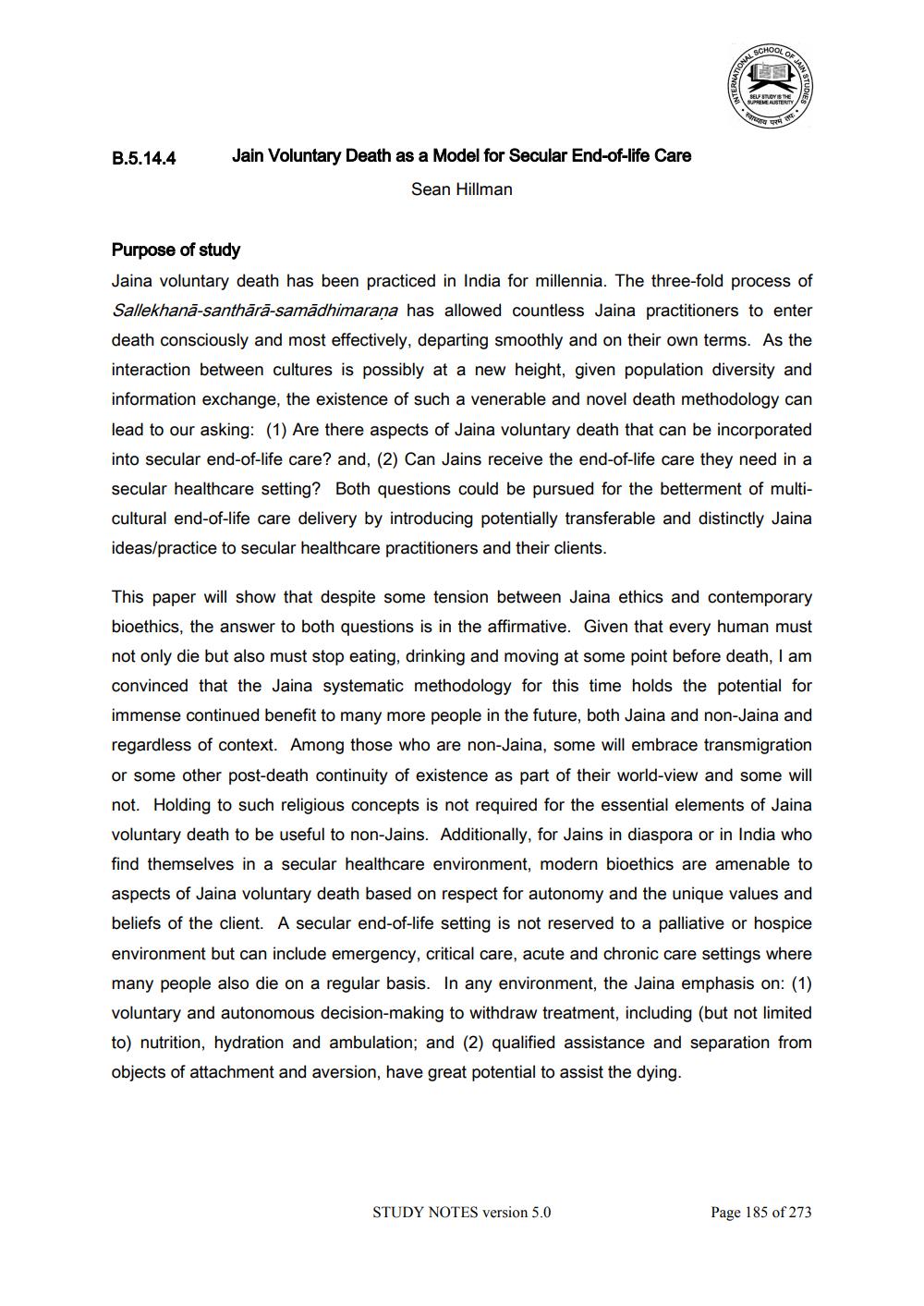________________
B.5.14.4
Jain Voluntary Death as a Model for Secular End-of-life Care
Sean Hillman
Purpose of study Jaina voluntary death has been practiced in India for millennia. The three-fold process of Sallekhanā-santhārā-samadhimarana has allowed countless Jaina practitioners to enter death consciously and most effectively, departing smoothly and on their own terms. As the interaction between cultures is possibly at a new height, given population diversity and information exchange, the existence of such a venerable and novel death methodology can lead to our asking: (1) Are there aspects of Jaina voluntary death that can be incorporated into secular end-of-life care? and, (2) Can Jains receive the end-of-life care they need in a secular healthcare setting? Both questions could be pursued for the betterment of multicultural end-of-life care delivery by introducing potentially transferable and distinctly Jaina ideas/practice to secular healthcare practitioners and their clients.
This paper will show that despite some tension between Jaina ethics and contemporary bioethics, the answer to both questions is in the affirmative. Given that every human must not only die but also must stop eating, drinking and moving at some point before death, I am convinced that the Jaina systematic methodology for this time holds the potential for immense continued benefit to many more people in the future, both Jaina and non-Jaina and regardless of context. Among those who are non-Jaina, some will embrace transmigration or some other post-death continuity of existence as part of their world-view and some will not. Holding to such religious concepts is not required for the essential elements of Jaina voluntary death to be useful to non-Jains. Additionally, for Jains in diaspora or in India who find themselves in a secular healthcare environment, modern bioethics are amenable to aspects of Jaina voluntary death based on respect for autonomy and the unique values and beliefs of the client. A secular end-of-life setting is not reserved to a palliative or hospice environment but can include emergency, critical care, acute and chronic care settings where many people also die on a regular basis. In any environment, the Jaina emphasis on: (1) voluntary and autonomous decision-making to withdraw treatment, including but not limited to) nutrition, hydration and ambulation; and (2) qualified assistance and separation from objects of attachment and aversion, have great potential to assist the dying.
STUDY NOTES version 5.0
Page 185 of 273




